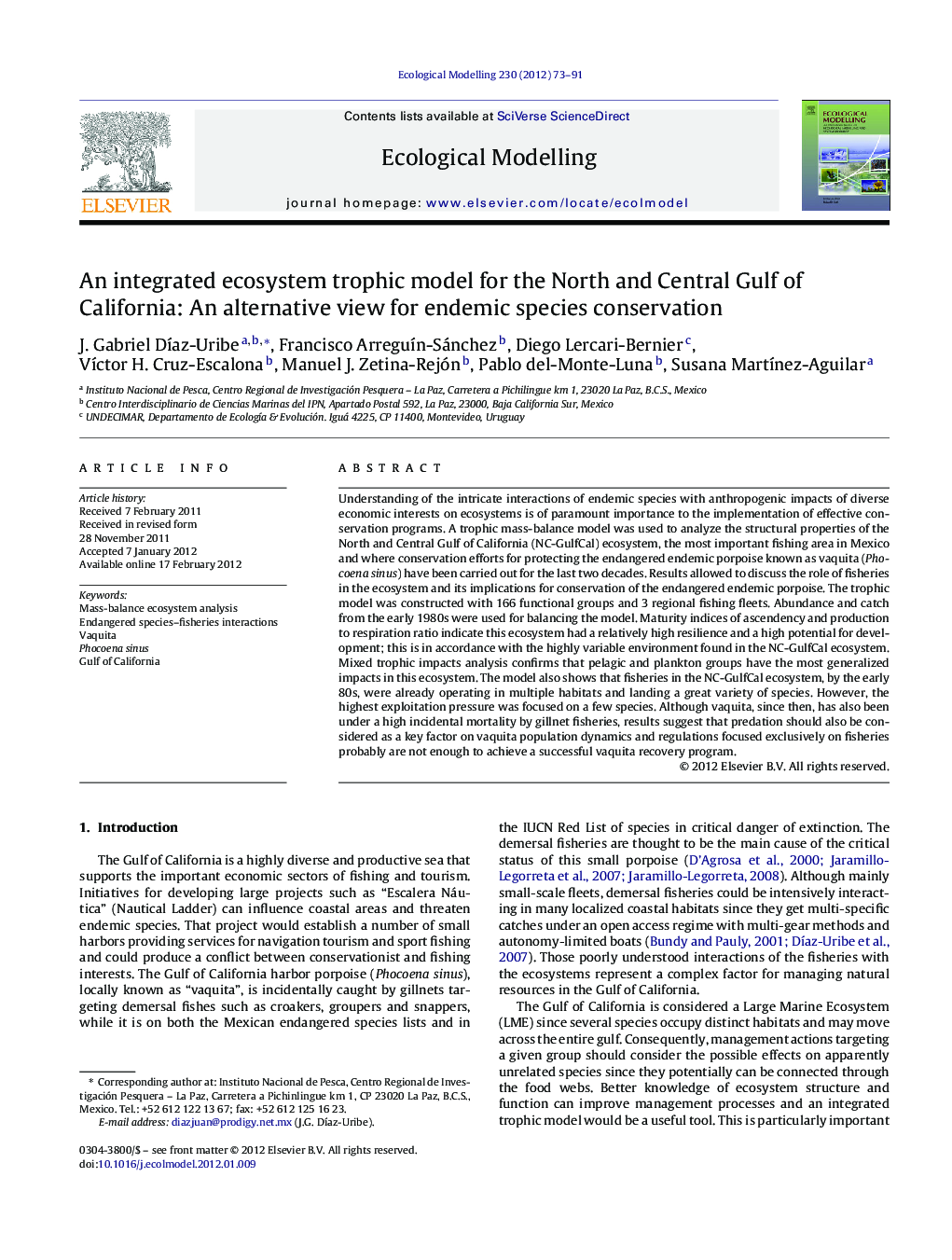| Article ID | Journal | Published Year | Pages | File Type |
|---|---|---|---|---|
| 4376513 | Ecological Modelling | 2012 | 19 Pages |
Understanding of the intricate interactions of endemic species with anthropogenic impacts of diverse economic interests on ecosystems is of paramount importance to the implementation of effective conservation programs. A trophic mass-balance model was used to analyze the structural properties of the North and Central Gulf of California (NC-GulfCal) ecosystem, the most important fishing area in Mexico and where conservation efforts for protecting the endangered endemic porpoise known as vaquita (Phocoena sinus) have been carried out for the last two decades. Results allowed to discuss the role of fisheries in the ecosystem and its implications for conservation of the endangered endemic porpoise. The trophic model was constructed with 166 functional groups and 3 regional fishing fleets. Abundance and catch from the early 1980s were used for balancing the model. Maturity indices of ascendency and production to respiration ratio indicate this ecosystem had a relatively high resilience and a high potential for development; this is in accordance with the highly variable environment found in the NC-GulfCal ecosystem. Mixed trophic impacts analysis confirms that pelagic and plankton groups have the most generalized impacts in this ecosystem. The model also shows that fisheries in the NC-GulfCal ecosystem, by the early 80s, were already operating in multiple habitats and landing a great variety of species. However, the highest exploitation pressure was focused on a few species. Although vaquita, since then, has also been under a high incidental mortality by gillnet fisheries, results suggest that predation should also be considered as a key factor on vaquita population dynamics and regulations focused exclusively on fisheries probably are not enough to achieve a successful vaquita recovery program.
► North-central Gulf of California ecosystem structure was studied with a trophic model. ► Maturity indices reflect a high resilient ecosystem with potential for development. ► Pelagic and plankton groups have the most expanded trophic impacts in the ecosystem. ► Fisheries used multiple habitats but exploitation impact focused on a few species. ► Exclusive fisheries-based regulations are not enough for endemic species conservation.
